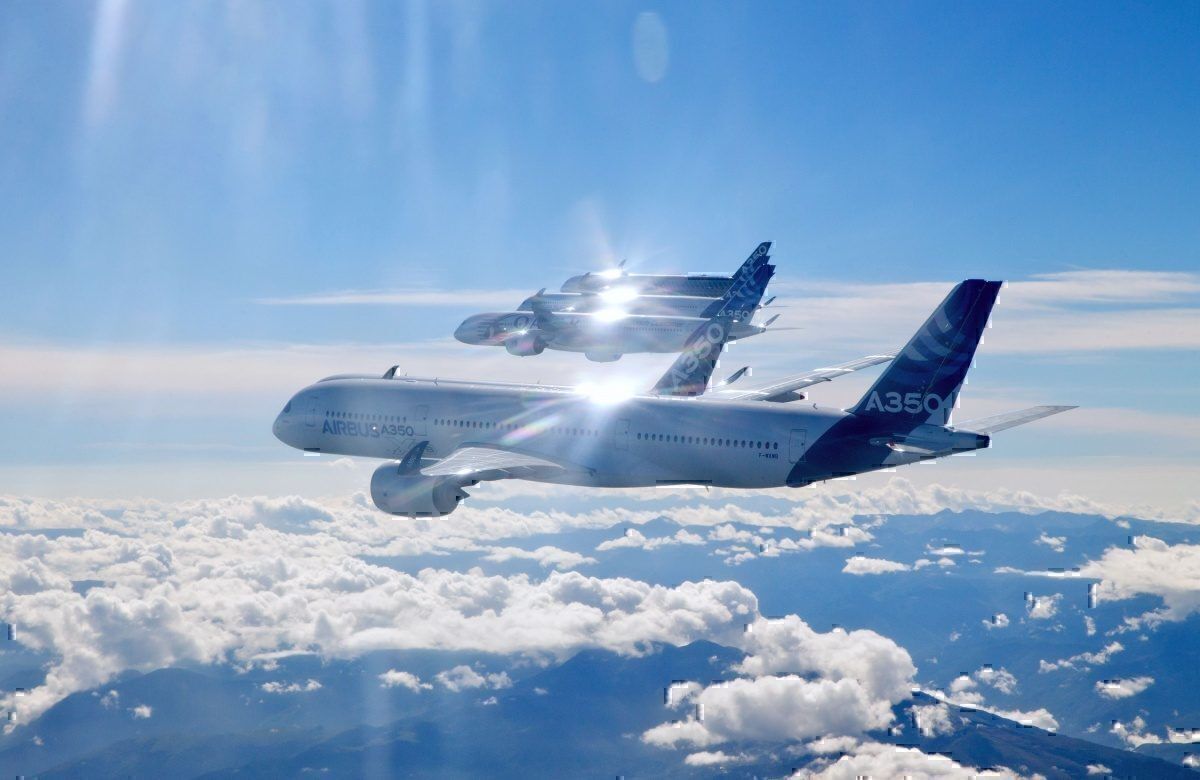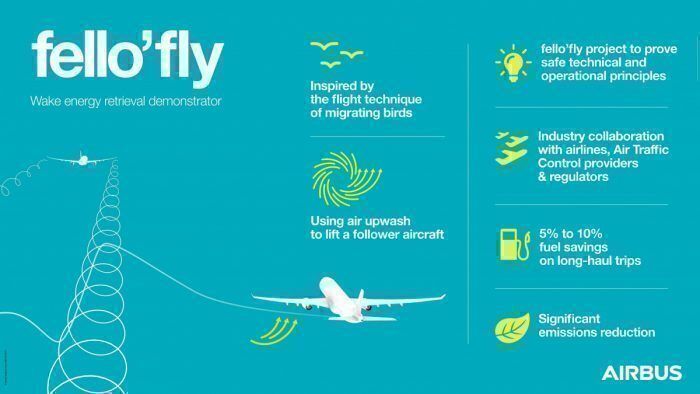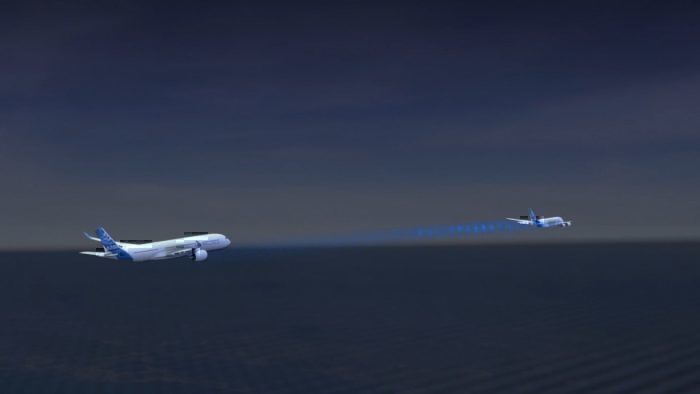Inspired by flocks of geese, Airbus is planning to undertake real-life testing of an operational strategy it is calling ‘fello'fly’. An A350-1000 test aircraft is going to fly within 1.5nmi of a commercial A350-900, to test out Airbus’ theory that flying in formation could reduce fuel consumption. While it’s an interesting theory, it’s also rather dangerous due to the potential for wake turbulence. Will flying in this way ever really happen?
Airbus to test benefits of formation flying
The way Airbus describes this flight strategy is ‘surfing the vortex’. It says that the following aircraft could be positioned in such a way so as to capture the energy generated by the wake vortex, and to use it to offset its own energy needs. Airbus estimates that this could lead to a significant fuel saving.
Specifically, Airbus has said that automated formation flight operations would take place in cruise only. It is planning to use its own A350-1000 testbed to follow behind a customer A350-900 in flight, in order to test out the theory. The test aircraft will be flying just 1.5nmi behind the other.
What about the hazards?
When we previously introduced the idea of formation flying, Simple Flying readers raised some interesting issues which would need to be addressed in order for this idea to really take off.
The biggest issue to overcome is wake turbulence. The disruption of air by the leading aircraft would buffet the following aircraft, making the journey very uncomfortable for passengers on board. Right now, FAA regulations specify a five mile separation to avoid wake turbulence. When Airbus raised this idea at the 40th Assembly of the ICAO, it said,
“Whilst wake turbulence is commonly considered as a threat for commercial airplanes, this concept aims at taking benefit from the energy contained in trailing vortices, without compromising safety which is paramount. Thus, positioning a trailing aircraft in a right way in the area where the vortex pushes air upward enables the trailing aircraft to save over 10% fuel.”
It’s an interesting concept, but one that will have to be seen to be believed. And it’s not going to be seen on commercial flights any time soon, because it is simply not allowed. The Traffic Alert and Collision Avoidance System (TCAS) will raise alerts if the mandatory degree of separation is breached, and would require firstly the rules to be amended and secondly the system to be recalibrated in order stop the TCAS alert.
Added to this, not every flight crew will be able to get involved in formation flying. While military pilots will have had some experience of close flight paths, commercial pilots will never have flown this close together. Extensive additional crew training will clearly be needed, putting another barrier in place to any sort of timely adoption of this operational modification.
Fundamentally, formation flying sounds as dangerous as it does beneficial. There are reasons for the separation protocols that are followed in modern commercial aviation, and these reasons aren’t going away just because Airbus wants them to.
Will it ever happen?
While Airbus may get a few test flights under their belt by the end of the year, a widespread rollout of formation flying is a long way off, if it ever happens at all. Flying close to another airliner drastically increases the risk of flight, and is not likely to have a huge queue of airlines willing to take it up, even considering the fuel saving.
Added to this are extensive regulatory hurdles to overcome. Bodies like EASA and the FAA will not be railroaded into changing regulations that have been in place for decades, particularly when it comes to safety. Airbus pressed the ICAO to develop International Standards and Recommended Practices (SARPs) to help them press forward with the study of formation flight, although it admitted that “the work in automated formation flight operations could experience significant delays.”
It will be interesting to see what Airbus’ results of this forthcoming test are, and particularly whether it can overcome the wake turbulence issue. However, it is highly unlikely any commercial flights will be traveling anywhere near any other aircraft for a very long time.



